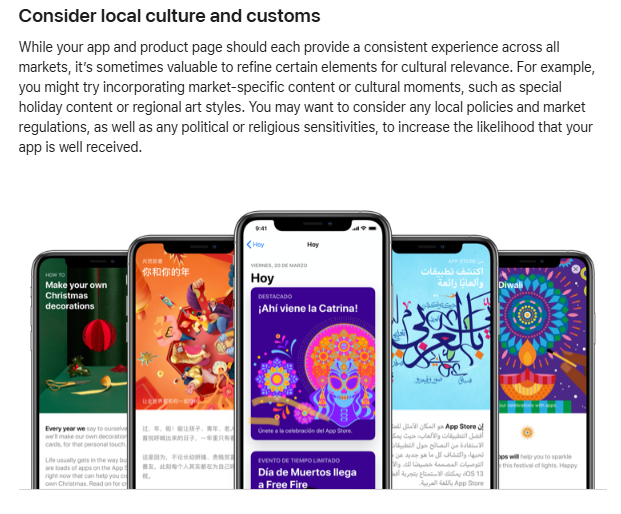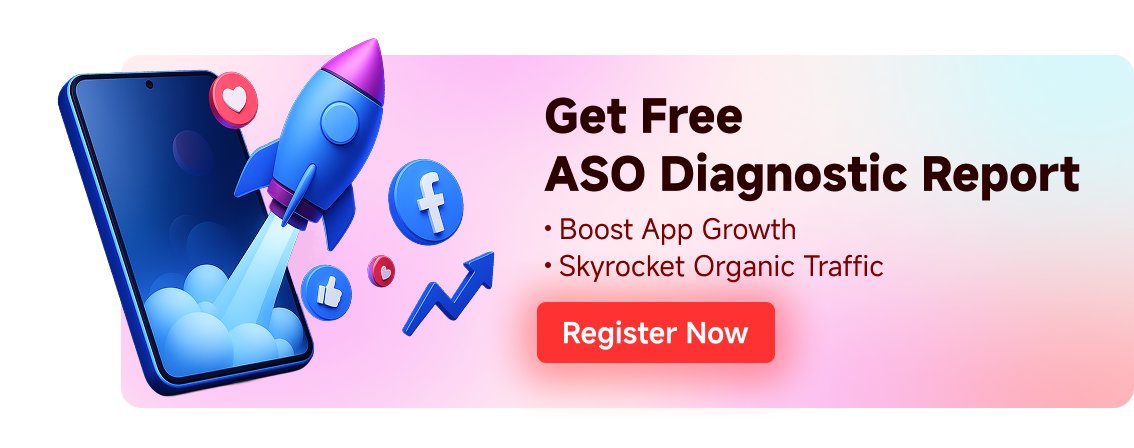
Loading...
Free consultation with ASO specialists
Doing ASO for the first time or have no idea how to carry out targeted optimization of your app?
We offer one-on-one customized services provided by app marketing specialists
ASO dilemma of niche vertical apps: balancing precise traffic and scale acquisition
2025-07-28
Meta Description: Analyze the ASO problems of niche apps, and teach you how to break through the growth bottleneck through a balanced strategy of precise traffic and scale.
The Unique Dilemma of ASO for Niche Apps —— Why are "Precision" and "Scale" Inherently Contradictory?
The growth path of niche apps (such as classical music score tools and pet funeral service platforms) is often blocked by a difficult problem: the user pool itself is narrow but the demand is highly specialized.
Data shows that the concentration of user search terms for vertical apps is 37% higher than that of general apps (source: 2025 ASO industry report by a third-party agency), but the total search volume is only 1/5 of that of general apps. This characteristic of "high concentration + low total" puts ASO in a dilemma:
-
Sticking to the precise keywords, the traffic is stable but the growth has stalled, and the daily active users have been hovering at a low level for a long time;
-
Blindly expanding the scope of keywords may increase downloads by 20%, but the proportion of non-target users will soar, and the conversion rate will plummet by more than 50%. [According to the A/B test data analysis of 50 niche apps by a vertical SaaS tool].
Three typical pain points are particularly prominent: fear of "narrow" - dare not break through after the peak of precise traffic; fear of "general" - user image confusion after expansion; fear of "trial and error" - limited budget for small and medium-sized teams, unable to afford the cost of multiple adjustments.
The premise of breaking the deadlock: the underlying logic of accurate traffic and scale acquisition - not opposing, but layered advancement
To break the deadlock, we must first clarify the essence of the two:
The core of precise traffic is "strong matching"
The essence of precise traffic is the high overlap between user search intent and App core functions. For example, for Apps in the "middle-to-high-end business car rental" category, locking onto words such as "business car rental" and "car rental platform" can achieve a conversion rate from search to download of over 35%, with first-day retention exceeding 45% - this is the survival foundation of vertical Apps.
The boundary of scale economies is "related demand"
Scale acquisition is not about blindly expanding the scope of keywords, but rather exploring the "upstream and downstream needs" of target users. For example, the "Camping Equipment" app can be expanded to "Campsite Recommendations" and "Outdoor Power Purchasing," but it must never touch on unrelated demands such as "Outdoor Shoes" or "Sports Clothing." A certain "Hanfu Rental" app once added "Ancient Costume Drama" terms, causing 90% of users to search for drama resources, and its Ratings dropped from 4.8 to 2.3, which is a typical lesson.
Balance formula (initial reference): 60% precise traffic (basic pool) + 30% relevant traffic (incremental pool) + 10% trial traffic (opportunity pool). Please note that the specific proportion needs to be dynamically adjusted according to the App's maturity, market competition degree and breadth of user needs.
Practical strategy: Four steps to solve the balance problem of "precision and scale"
-
Keyword strategy: Long tail as the main, core as the auxiliary, and solidify the foundation of traffic
The keyword layout of niche vertical apps must follow the "7:3 principle" - 70% long-tail keywords ensure accuracy, and 30% core keywords expand boundaries, avoiding the trap of "either too little or inaccurate".
-
Long tail keywords: Locking specific scenarios and needs
Long-tail keywords are the core source of precise traffic, and need to be deeply combined with users' specific usage scenarios, operation processes or actual questions. Such words usually contain more detailed scenario descriptions (such as function use in a specific environment), users' step-by-step operation requirements (such as beginner's step-by-step guidance), or solutions for vertical needs (such as service processes for specific groups, resource acquisition in professional fields).
Tool recommendation: Use keyword research tools (such as UPUP) to filter long-tail keywords with "Popularity>10", and combine Keyword Coverage Service (e.g. AppFast) to expand the scope of inclusion, ensuring that more high-conversion niche demands are covered.

-
Keywords: Match with determiners to reduce competition
The core keywords need to be narrowed down through precise modifiers, while retaining a certain amount of search volume and lowering the competition threshold. For example, adding relevant qualifiers before general domain words or combining feature words from vertical scenarios can avoid direct competition with popular apps and strengthen the attraction to target users. A vertical service app improved its ranking by more than 20 places by adding scenario limited words to the core keywords, and its conversion rate remained stable at over 30%.
-
Dynamic Monitoring and Iteration
Use data analysis tools (such as UPUP) to analyze keyword performance on a weekly basis, promptly eliminate keywords with low search volume or low conversion rates, and simultaneously supplement keywords related to new user demands (such as new search directions adjusted according to seasonal changes and trends in user behavior). By continuously optimizing the keyword library, ensure a dynamic balance between traffic quality and scale.
-
App Store Optimization: Boosting Conversion with "Trust Signals" and Filtering Out Ineffective Traffic
App store data is the first impression users have of an app, and it needs to achieve the dual goals of "attracting accurate users" and "filtering out non-target users".
-
Title and Subtitle: Identity Labels
The main title contains the core word, and the sub-title supplements the user profile, so that users can identify at a glance "This is designed for me". Data shows that sub-titles containing user labels can increase precise clicks by 25%.
-
Description copy: Highlight "Niche Value" and technical terms
The first 3 lines directly address the pain points of vertical categories, such as "A post-production tool designed specifically for independent photographers, supporting batch color correction in RAW format and built-in 100+ travel photography presets." The appropriate use of industry terms (such as "Lr preset synchronization" and "equatorial mount calibration") can both enhance professionalism and filter out non-target users.
-
Screenshots and Preview Videos: Enhancing Scene Resonance
Screenshots should show typical use cases (e.g., "Pour Over Coffee Timer Interface," "Independent Bookstore Inventory Management Backend"), and text labels can be added (e.g., "Beginner's Guide"). After a professional photography app added the label "Travel Photography Photographer Must-Have" to its screenshots, conversion rates increased by 20%.
-
Ratings & Reviews: Building Trust in Verticals
High Ratings (4.5+) are crucial for niche apps, and can trigger a rating request after the user completes a core action: "As a coffee lover, has this feature been helpful to you?" For negative Reviews, respond with professional terminology to demonstrate professionalism.
-
Localization and Multilingual Expansion: Unlocking Incremental Growth in Regional Markets
Niche apps can be accessed via Localization Break through the user pool limit, especially in emerging markets such as Southeast Asia and Latin America, where there are few similar competitors, and the cost of obtaining precise traffic is lower.
-
Highly rated markets are preferred
For example, "Tea Ceremony App" first attacks Japan and Taiwan, and "Outdoor Camping Tools" focuses on Southeast Asia. The user demand in these markets matches the core functions of the app.
-
Keyword and asset localization
Optimize keywords with local language and slang (e.g., Indonesian “belanja online” instead of “online shopping”), incorporate regional cultural symbols into materials (e.g., Mexican market uses “Day of the Dead” elements).
-
Small Scale Testing and Iteration
After each market goes online, test the core word rankings and conversion rates for 2 weeks, focusing on areas with "downloads > 50/day and conversion rate > 15%".

-
Multi-channel collaboration: ASO as the base, external引流 to expand scale
It is difficult to break through the traffic ceiling by app store optimization alone, and it is necessary to combine external channels to attract traffic, forming a virtuous circle of "accurate traffic + scale increment".
-
Vertical Communities and Content Marketing
Share professional content (such as "3 common mistakes made by beginners in hand-drip coffee") in vertical communities where target users are active (such as Reddit vertical sections, Discord professional channels, specific forums, etc.), implant App functions, and guide users to search and download. Note that the platform selection must highly match the target user group.
-
KOL Collaborate with opinion leaders
Invite vertical experts (such as independent bookstore bloggers and veterinarians) to evaluate the app, highlighting its "Niche Compatibility": "This is the only App that supports pet funeral process management, saving me 40% of my time." Expert recommendations can improve keyword rankings (the app store algorithm will identify downloads brought by external traffic).
-
App Store Ads: High Conversion Keywords
Targeting "long-tail keywords + related words" with Apple Search Ads or Google UAC can be combined Keyword installation optimization Service reduces customer acquisition costs, and users brought by advertising can improve natural rankings if retention is good.

Conclusion
ASO for niche vertical apps is not a "choose one" question, but rather a delicate task of "layered progression." First, secure the foundation of 60% precise traffic, then expand incremental growth with 30% relevant keywords, and finally seek opportunities with 10% exploratory keywords - this is the sustainable growth logic. With professional tools and services, you can completely turn "niche" into a "unique advantage," occupying an irreplaceable position in the niche market.
Whether it is keyword matrix building, localization expansion, or material and review optimization, professional tools and experience are required.
AppFast focuses on ASO optimization for Apple App Store and Google Play, providing services such as keyword ranking optimization, precise installation volume increase, ratings and reviews management, etc., which can help you:
-
Use AI tools to filter high-conversion long-tail keywords and avoid blindly expanding the volume;
-
Through the "Keyword Ranking" service, stabilize core traffic and expand related word increment;
-
Optimize metadata materials and reviews to improve the filtering efficiency of non-target users.
Consult now, let your App break through in the narrow pool, and achieve "precision + scale" double growth.
Related recommendations

